February 15 marks the feast day of Jesuit priest and devotee to the Sacred Heart of Jesus, Saint Claude la Colombière (born 1641, died 1682). Claude was a reluctant saint, born into a middle class family in southeastern France. Throughout his life, he never backed down from challenges (of which he faced many), placed his confidence firmly in the Lord, and looked to the Sacred Heart of Jesus as his hope and consolation. Saint Claude spent long hours in prayer, and wrote about the practice of prayer.
Below, the Homily of the Canonization Mass for Saint Claude La Colombiere, delivered by Pope John Paul II.
1. "So that you love for me may live in them" (Jn 17:26).
Christ prays in the Upper Room. He prays on the evening in which he instituted the Eucharist. He prays for the Apostles and for all those "who will believe through their word'' (Jn 17:20) down the generations and centuries. He is asking the Father that all "may be one'', as the Father is in the Son and the Son is in the Father: "That they may be one in us'' (Jn 17:21).
To be one: the unity of Divinity and the unity of communion of the Persons—the unity of the Father in the Son and of the Son with the Father in the Holy Spirit. Unity through Love.
Christ prays for love: "So that your love for me may live in them'' (Jn 17:26).
Christ reveals the secret of his Heart. Precisely this human Heart of God's Son is an ineffable sanctuary which contains all the treasures of love: it is a Heart "overflowing with goodness and love'' (Litany of the Sacred heart of Jesus).
2. The prayer offered by Christ in the Upper Room continues in the Church: from century to century, from generation to generation, it is a perennial "source of life and holiness'' (ibid.). But there are particular moments in history, specially chosen places and persons who almost discover and reveal anew this perennial and undying truth about love.
The man whom the Church today proclaims a saint—Blessed Claude La Colombiere—is certainly one of these persons.
An intense spiritual movement enlivened the Church in France
3. In France the 17th century has been called "the great century of souls''. It was a time of high human culture, of the development of the institutions of that prestigious European nation. But it was also a time of cruel conflict and human poverty. The clergy and religious orders were often decadent; as a result the people remained far from the light of faith, the benefits of the spiritual life and of ecclesial communion. However, after the Council of Trent, after founders such as Francis de Sales, Berulle and Vincent de Paul, an intense spiritual movement enlivened the Church in France. A great work of reform took place: the priestly ministry was renewed, notably through the establishment of seminaries; religious returned to the authenticity of their vocation, new foundations came into being; evangelization of the countryside took on new vitality through parish missions; a flowering of mysticism was joined to theological reflection.
In the middle of this century lived Claude La Colombiere, who entered the Society of Jesus at a young age. He exercised his mission in Paris and in several provinces; he had a notable influence because of his intellectual effort, and even more, because of the dynamism of the Christian life which he knew how to communicate.
4. A true companion of Saint Ignatius, Claude learned to master his strong sensitivity. He humbly maintained a sense of "his wretchedness'' so as to rely only on his hope in God and his trust in grace. He resolutely took the way of holiness. He adhered with all his being to the Constitutions and Rules of the Society, rejecting all tepidness. Fidelity and obedience were expressed, before God, by the "desire ... for trust, love, resignation and perfect sacrifice'' ( Retraite, n. 28).
Fr. Claude forged his spirituality in the school of the Exercises. We still have his impressive journal. He dedicated himself first of all to "meditating a great deal on the life of Jesus'' (Ibid., n. 33). Contemplating Christ allowed him to live in familiarity with him so as to belong to him totally: "I see that I absolutely must belong to him'' (ibid., n. 71). And if Claude dared to aim for this total fidelity, it was in virtue of his acute awareness of the power of grace which transformed him. He attained the perfect freedom of one who gives himself unreservedly to the will of God: "I have a free heart'', he said (ibid., n. 12): trials or sacrifices he accepted, "thinking that God only expects these things of us out of friendship'' (ibid., n. 38). His whole taste for friendship led him to respond to God's friendship with a loving zeal renewed each day.
Fr. La Colombiere was active in the apostolate with the conviction that he was the instrument of God's work: "To do much for God, one must belong entirely to him'' (ibid., n. 37). Prayer, he also said, is "the only way ... to have God united to us so that we may do something for his glory'' (ibid., n. 52). In the apostolate fruits and success come less from personal abilities than from fidelity to the divine will and openness to his action.
Saint Claude spread devotion to Sacred Heart
5. This pure-hearted and free religious was prepared to understand and to preach the message that the Heart of Jesus was entrusting to Sr. Margaret Mary Alacoque at the same time. Paray-le-Monial, in our eyes, would be the most fruitful stage in Claude La Colombiere's very short journey. He came to this town, long rich for its tradition of religious life, to have a providential meeting with the humble Visitandine engaged in constant dialogue with her "divine Master'', who promised her "the delights of [his] pure love.'' He found her to be a religious who ardently desired the "all-pure cross'' ( Memoire, n. 49) and who offered her penance and sorrows without hesitation.
Fr. La Colombiere, with highly reliable discernment, straightaway authenticated the mystical experience of this "beloved disciple [of the] Sacred Heart'' (ibid., n. 54), with whom he had a beautiful spiritual kinship. He received from her the message which would have great repercussions: "Behold the Heart which has so loved men that it spared nothing to exhaust and consume itself in testimony of its love'' ( Retraites, n. 135). The Lord asked that a feast be established to honour his Heart and that a "reparation of honour'' be made to him in Eucharistic communion. Margaret Mary passed on to "the faithful servant and perfect friend'', whom she recognized in Fr. La Colombiere, the mission of "establishing this devotion and of giving this pleasure to my divine Heart'' (ibid.). Claude, in the years left to him, interiorized these "infinite riches''. His spiritual life then developed in the perspective of the "reparation'' and "infinite mercy'' so underscored at Paray. He gave himself completely to the Sacred Heart "ever burning with love''. Even in trials he practiced forgetfulness of self in order to attain purity of love and to raise the world to God. Sensing his own weakness, he gave himself over to the power of grace: "Accomplish your will in me, Lord.... It belongs to you to do everything, divine Heart of Jesus Christ'' (ibid., Offrande, n. 152).
6. The past three centuries allow us to evaluate the importance of the message which was entrusted to Claude La Colombiere. In a period of contrast between the fervor of some and the indifference or impiety of many, here is a devotion centred on the humanity of Christ, on his presence, on his love of mercy and on forgiveness. The call to "reparation'', characteristic of Paray-le-Monial, can be variously understood, but essentially it is a matter of sinners, which all human beings are, returning to the Lord, touched by his love, and offering a more intense fidelity in the future, a life aflame with charity. If there is solidarity in sin, there is also solidarity in salvation. The offering of each is made for the good of all. Following the example of Claude La Colombiere, the faithful understand that such a spiritual attitude can only be the action of Christ in them, shown through Eucharistic communion: to receive in their heart the Heart of Christ and to be united to the sacrifice which he alone can offer worthily to the Father.
Devotion to the Heart of Christ would be a source of balance and spiritual strengthening for Christian communities so often faced with increasing unbelief over the coming centuries: an impersonal conception of God will spread; individuals, moving away from a personal encounter with Christ and the sources of grace, will want to be the sole masters of their history and to become a law unto themselves, to the point of being ruthless in pursuing their own ambitions. The message of Paray, accessible to the humble as well as to the great of this world, answers such aberrations by clarifying the relationship of the human person with God and with the world of the light which comes from the heart of God: in conformity with the Church's Tradition, it turns his gaze towards the cross of the world's Redeemer, towards "him whom they have pierced'' (Jn 19:37).
May Saint Claude inspire Church to live consecration to Christ's Heart
7. We give thanks, again today, for the message entrusted to the saints of Paray, which has never ceased to extend its radiance. At the beginning of our century Pope Leo XIII hailed "in the Sacred Heart of Jesus a symbol and clear image of Jesus Christ's infinite love, a love which impels us to love one another'' (Encycl. Annum sacrum, 1900). Pius XI and Pius XII encouraged this devotion and saw in it a spiritual answer to the difficulties which the faith and the Church were facing.
Certainly, forms of expression and sensitivities develop, but the essential element remains. When one has discovered in Eucharist adoration and meditation the Heart of Jesus "ever burning with love for human beings'' ( Retraites, n. 150), how could one let oneself be seduced by forms of meditation which turn in on the self without welcoming the presence of the Lord? How could one be attracted by the proliferation of conceptions of the sacred which only mask a tragic spiritual emptiness?
For evangelization today the Heart of Christ must be recognized as the heart of the Church: it is he who calls us to conversion, to reconciliation. It is he who leads pure hearts and those hungering for justice along the way of the Beatitudes. It is he who achieves the warm communion of the members of the one Body. It is he who enables us to adhere to the Good News and to accept the promise of eternal life. It is he who sends us out on mission. The heart-to-heart with Jesus broadens the human heart on a global scale.
May the canonization of Claude La Colombiere be for the whole Church an appeal to live the consecration to the Heart of Christ, a consecration which is a self-giving that allows the charity of Christ to inspire us, pardon us and lead us in his ardent desire to open the ways of truth and life to all our brothers and sisters!
8. "Righteous Father, the world also does not know you but I know you, and they know that you sent me'' (Jn 17:25).
They: Claude La Colombiere—Margaret Mary Alacoque. The Church. During the Easter season the Church relives the theophanies of her Redeemer and Lord—the Good Shepherd who "lays down his life for the sheep'' (cf. Jn 10:15).
And the Church looks to heaven together with Stephen the deacon, the first martyr stoned to death in Jerusalem. the Church looks to heaven as Stephen did at the moment of his death as a martyr.
"Behold, I see the heavens opened and the Son of Man standing at the right hand of God.... Lord Jesus, receive my spirit'' (Acts 7:56-59).
Amen!
Why pray the Rosary every day for a year?
Each time the Blessed Virgin has appeared-- whether it be to Saint Bernadette Soubirous at Lourdes; to Lucia, Jacinta, and Francisco at Fatima; or to Mariette Beco at Banneux-- she has asserted the importance, saving grace, and power of praying the Holy Rosary on a daily basis. Based upon her words, the Rosary is penance and conversion for sinners, a pathway to peace, an end to war, and a powerful act of faith in Jesus Christ. Pope Paul VI presented the Rosary as a powerful means to reach Christ "not merely with Mary but indeed, insofar as this is possible to us, in the same way as Mary, who is certainly the one who thought about Him more than anyone else has ever done."
To show us how this is done, perhaps no one has been more eloquent than the great Cardinal Newman, who wrote: "The great power of the Rosary consists in the fact that it translates the Creed into Prayer. Of course, the Creed is already in a certain sense a prayer and a great act of homage towards God, but the Rosary brings us to meditate again on the great truth of His life and death, and brings this truth close to our hearts. Even Christians, although they know God, usually fear rather than love Him. The strength of the Rosary lies in the particular manner in which it considers these mysteries, since all our thinking about Christ is intertwined with the thought of His Mother, in the relations between Mother and Son; the Holy Family is presented to us, the home in which God lived His infinite love."
As Mary said at Fatima, "Jesus wants to use you to make Me known and loved. He wishes to establish the devotion to My Immaculate Heart throughout the world. I promise salvation to whoever embraces it; these souls will be dear to God, like flowers put by Me to adorn his throne."

Subscribe to:
Post Comments (Atom)

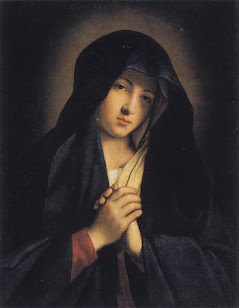
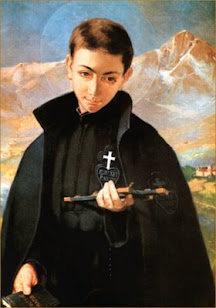




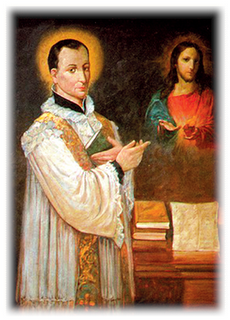
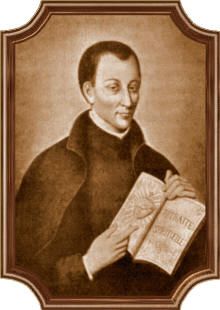

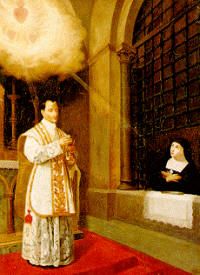

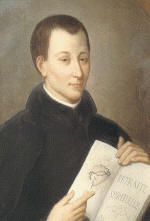


Very... Nicee... Blog.. I really appreciate it... Thanks..:-)